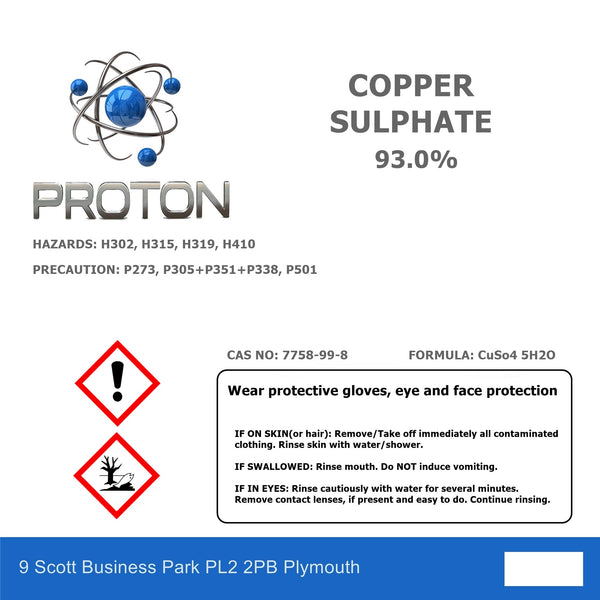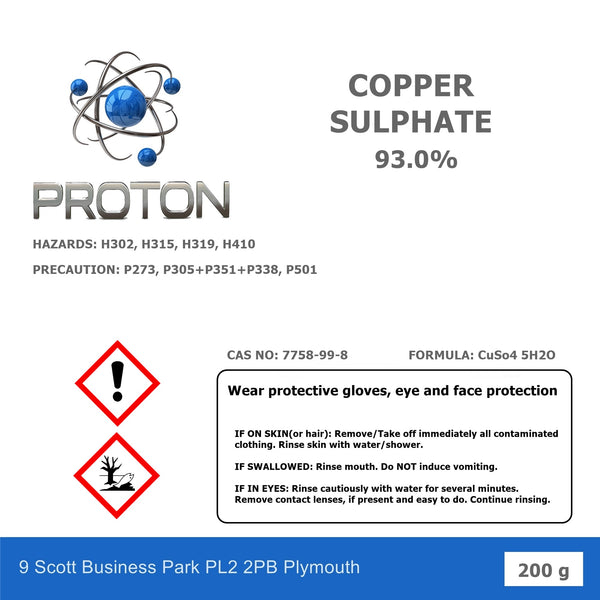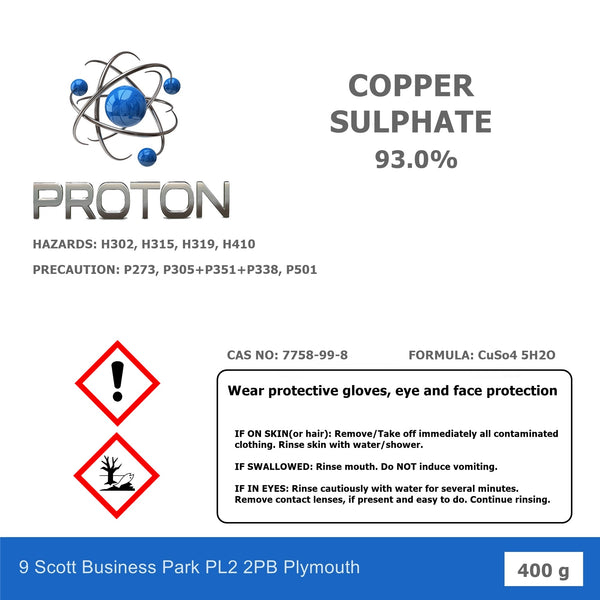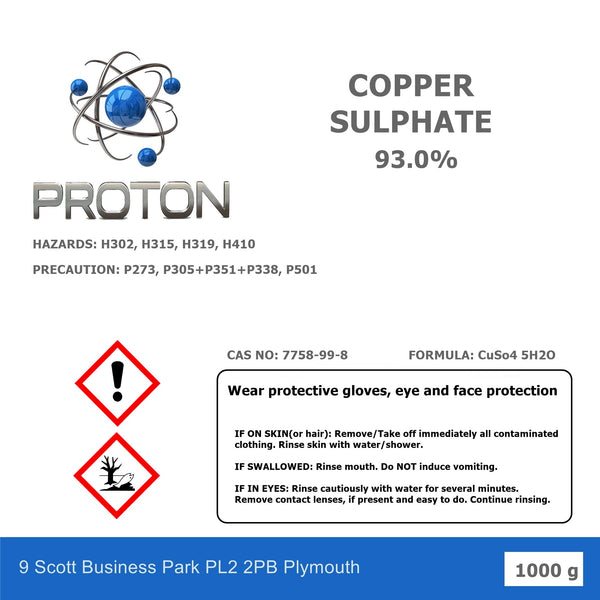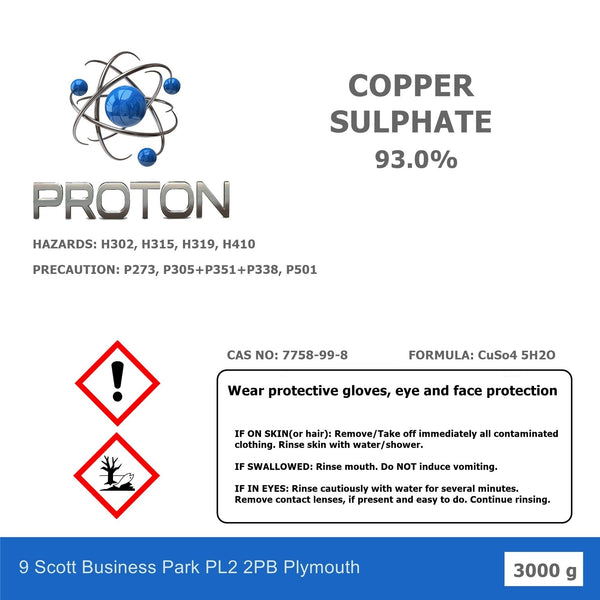Copper Sulphate 93.0%
Copper Sulphate 93.0%
Buy 1, Get 1 25% Off 🔥 — 🛒 Add 2 to Basket — Mix & Match PROTON
Copper Sulphate 93% is a powerful blue crystalline compound widely used for controlling moss, algae, and invasive roots, as well as for general garden and outdoor maintenance. This high-strength technical-grade powder dissolves easily in water and is supplied in durable grip-seal bags in multiple convenient sizes.
⭐ Key Uses
-
Moss and algae control on outdoor surfaces
-
Root treatment and drainage line maintenance
-
Garden, lawn and outdoor cleaning applications
🧪 How to Use
1️⃣ Moss & Algae Treatment (Patios, Roofs, Paths)
-
Dissolve 50 g of copper sulphate in 1 litre of hot water.
-
Stir until fully dissolved.
-
Apply with a sprayer or brush to moss/algae patches and leave to act.
Safety: Keep away from plants you do not wish to damage.
2️⃣ Root Control in Drains & Pipes
-
Mix 100 g of copper sulphate in 2 litres of warm water.
-
Pour solution directly into the affected drain.
-
Leave for several hours before flushing with clean water.
Safety: Do not use in septic systems unless approved.
3️⃣ Pond & Water Feature Algae Reduction (Non-fish ponds only)
-
Dissolve 2–3 g of copper sulphate per 10 litres of water.
-
Pour evenly around the edges of the pond or feature.
-
Repeat only when necessary.
Safety: Do not use in ponds containing fish or aquatic life.
📋 Product Details
Concentration: 93%
Grade: Technical Grade
Form: Blue Crystalline Powder
Packaging: Grip-seal bags
Available Sizes: 200g, 400g, 1kg, 2kg, 3kg, 4kg
📈 Other Names
-
Blue Vitriol
-
Cupric Sulphate
-
Copper(II) Sulphate Crystals
SEO Keywords: copper sulphate 93%, copper sulfate moss killer, blue crystals copper sulphate, drain root killer, algae control copper sulfate, PROTON copper sulphate UK, garden moss treatment
❓ FAQ
1. Is Copper Sulphate safe for fish ponds?
No. It should not be used in ponds or tanks containing fish or aquatic animals.
2. Will Copper Sulphate damage plants?
It can harm plants if over-applied. Use carefully and avoid spraying directly on grass or ornamental plants.
3. Does it dissolve easily?
Yes. Copper sulphate dissolves quickly in warm or hot water for easy application.
Buyer assumes all responsibility for safety and use not in accordance with directions.






